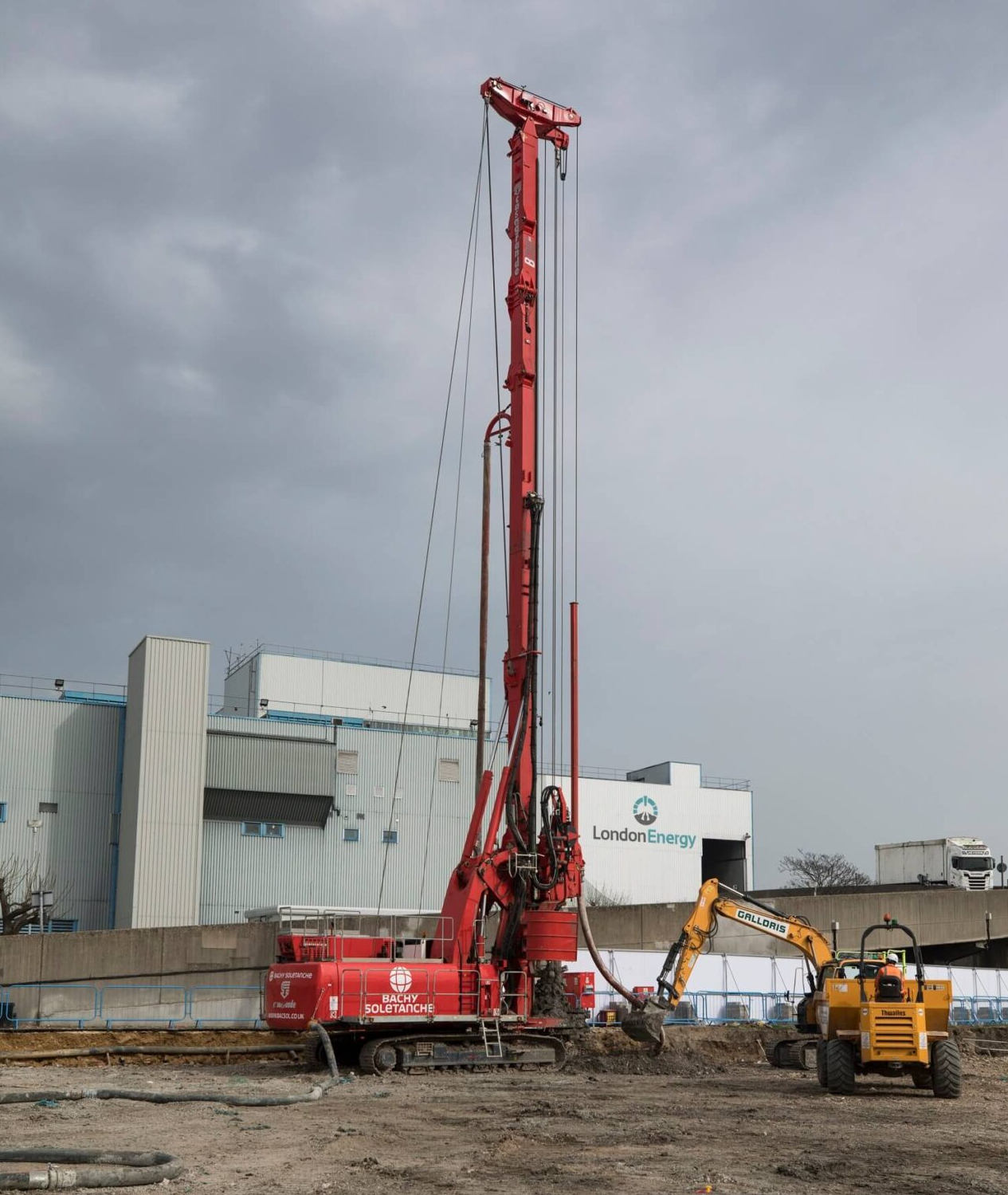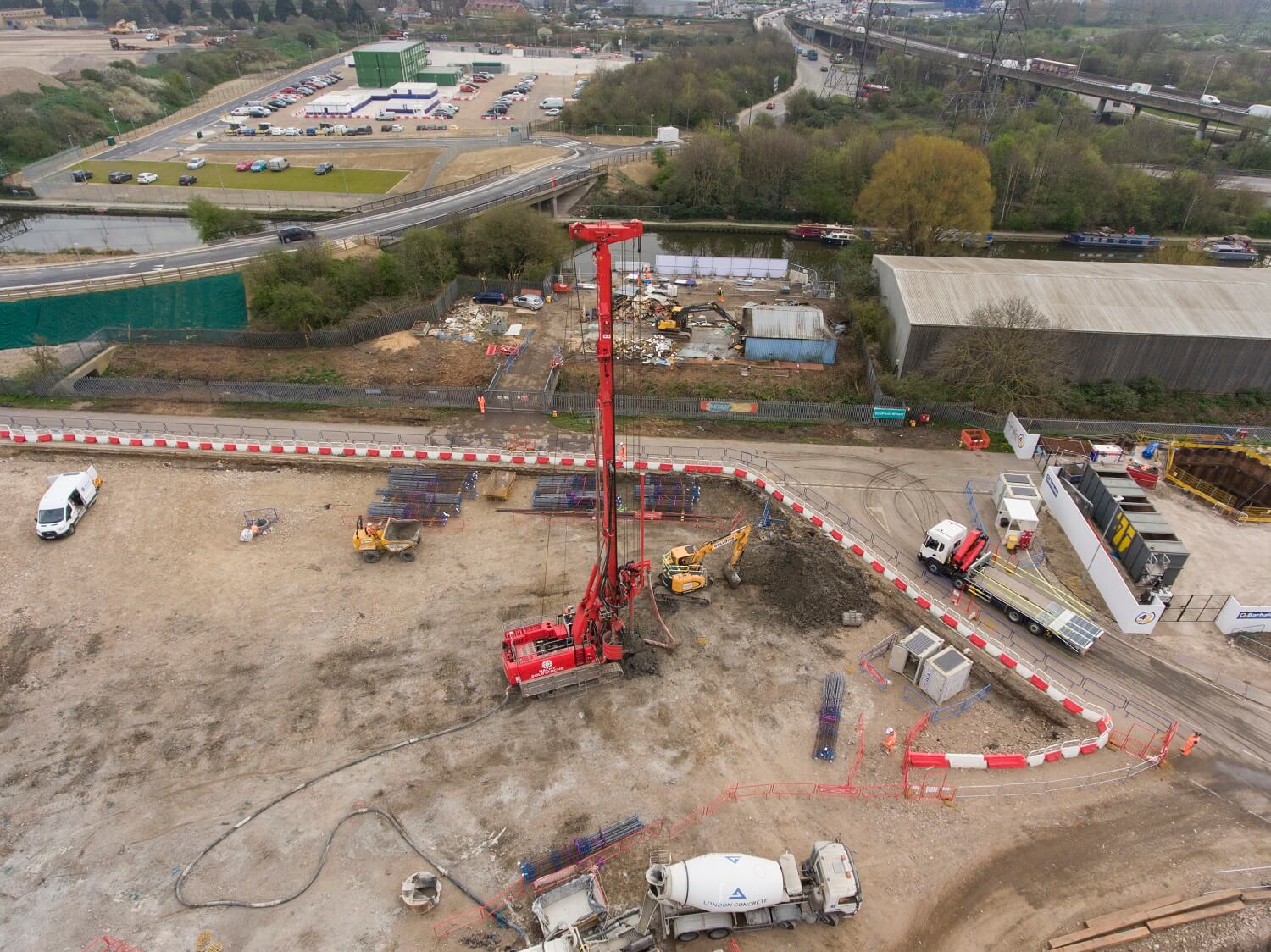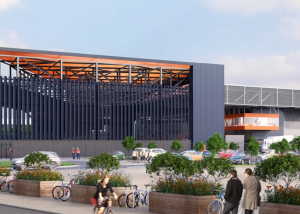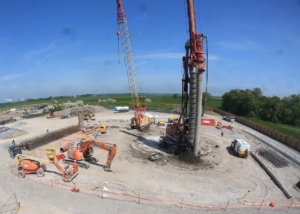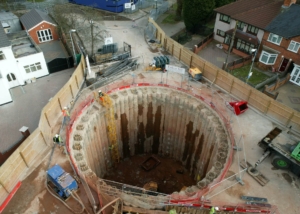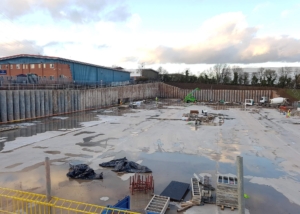THE SCHEME
EcoPark South is the second phase of the North London Waste Authority’s (NWLA) scheme to create a sustainable waste management hub at Edmonton EcoPark. The new hub, which is part of the NWLA’s North London Heat and Power Project, is aiming to drive up North London’s recycling levels and use non-recyclable waste to generate low-carbon energy. Through this focus on energy recovery, the scheme is expected to prevent 215,000 tonnes of CO2e emissions
annually.
The EcoPark South development will include the construction of a 70-megawatt Energy Recovery Facility (ERF), which will treat up to 700,000 tonnes of residual waste a year; a Resource Recovery Facility (RRF), which will separate waste for recycling; the first ever public Reuse and Recycling Centre (RRC); and the EcoPark House, which will act as an environmental information centre for the public.
PILING OPERATIONS
Bachy Soletanche’s scope of works on this project comprised the ground engineering design and construction for two key structures: The Resource Recovery Facility (RRF) and the Reuse and Recycling Centre (RRC) buildings. To form the basis of these structures, Bachy Soletanche installed a total of 419 continuous flight auger (CFA) piles with diameters of 400-500mm that were bored to an average depth of 21m.
Phase 1 of the project involved installation of 177 CFA piles for the RRC building and 180 CFA piles for the RRF building. Once these piles were complete, Bachy
Soletanche constructed a low permeability cut-off wall for the RFF building using the Trenchmix® method, which stood 400m long, 0.4m wide and 6m deep. This solution involves the in-situ mixing of soil with a cement slurry that hardens to form a barrier, therefore it was selected as the most effective method for preventing hydro-static uplift of the ground floor slab. Part of the cut-off wall construction was postponed due to the required decommissioning of an old sewer system. Once removed, the team commenced with the final section of the wall, which was installed using a long-reach excavator under slurry to achieve a complete replacement of the soil.
For the second phase of piling works, the team constructed an additional 62 CFA piles to support the RRC building. This was followed by a third and final phase of piling for the Integrated Odour Control and Ventilation System (IOVS) building, which required an additional 29 CFA piles, 600mm wide and 25m long.
Bachy Soletanche’s sister company, Vibro Menard, installed 1,130 Controlled Modulus Columns (CMCs). The team decided upon CMCs as the most efficient option for providing support of the RRF building’s ground slab as it allowed load bearing pressures to be distributed between the columns and the soil. This
innovative ground improvement technology acts as an ideal alternative to traditional methods when ground conditions are weak, or load bearing pressures are high. Additionally, the CMC approach avoided drilling down past the existing sewer, which mitigated any risk of service interface.
ENVIRONMENTALLY LED SOLUTION
Bachy Soletanche secured the EcoPark South contract thanks to the breadth of sustainable solutions it proposed at early stages in the tender process.
The use of Trenchmix for the installation of the cut-off wall decreased the project’s emissions through offering approximately a 30% reduction in embodied carbon (versus a sheet piled wall). Furthermore, the in-situ mixing of Trenchmix removed the need for a total replacement solution, thus minimising the handling and disposal of arisings, as well as reducing the vehicles required for deliveries and spoil removal.
The inclusion of CMCs led to a reduction in embodied carbon as the solution requires significantly less concrete and steel. Compared to the traditional CFA
technique, using CMCs allowed a much thinner ground slab to be installed. Along with enhancing the project’s environmental credentials, this created valuable cost and programme savings. Another key environmental benefit of CMCs is that it avoids unnecessary soil extraction and disposal due to the lateral displacement of soil into the ground.
The combined techniques helped contribute to an overall reduction of approximately 10–16% in the total embodied carbon in the geotechnical works. This collaborative approach not only offered the client an efficient and effective solution, but it was also one that achieved environmental gains.
